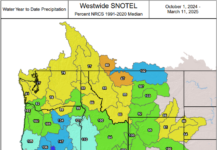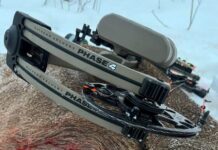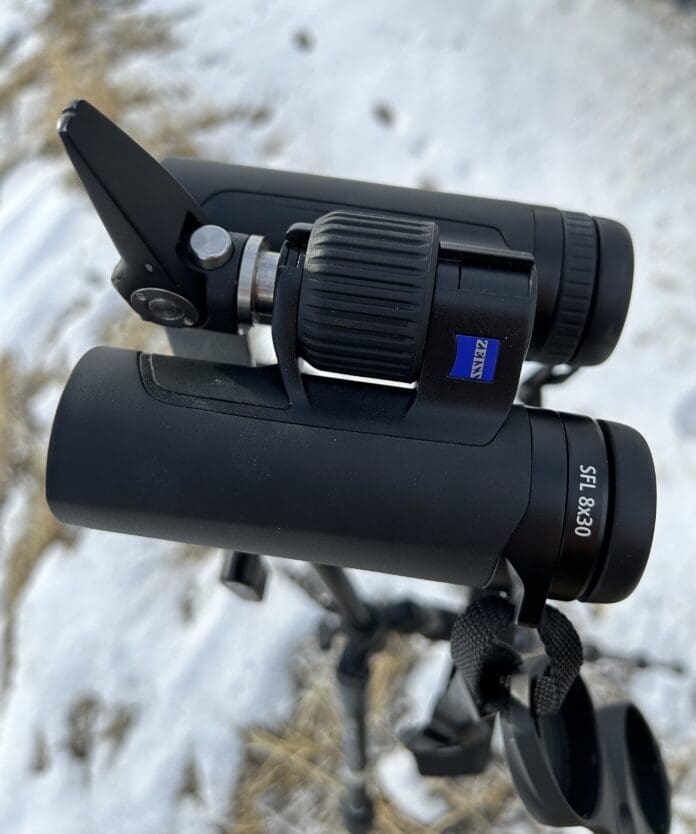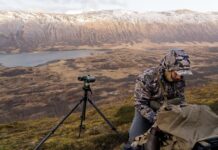 Compact binoculars used to be laughable. They were almost like toys and I ignored them for years. Zeiss has changed my mind with their new Zeiss SFL 8×30 binoculars.
Compact binoculars used to be laughable. They were almost like toys and I ignored them for years. Zeiss has changed my mind with their new Zeiss SFL 8×30 binoculars.
Backing up to 2021, Zeiss released their SF (Smart Focus) Binoculars, and then in 2022, their SFL (Smart Focus Light) Binoculars. Smart Focus just means a max 1.4 revolution turn of the focus knob—and it works with precision—and with only one finger!
I reviewed in head-to-head style, three models from both lines: the Victory SF 8×32 & 10×32, here and then the 10×40 here. They surprised me at their performance from a small package. I later purchased those SFs in 10×32 & the SFLs in 10×40 (at a writer’s discount) because I liked them so much.
But frankly, none were a true compact and Zeiss was stretching it a bit with that description. They were more like mid-compact: smaller than a pair of standard 8x or 10x chest binocular, but bigger than the compacts I’d tried over the years.
When Zeiss sent me their new SFL 8×30 back in November, I thought
OK, these are getting closer to a true compact size…but will they perform?
My hunts were over by the time I received them, but I had plenty of winter scouting ahead. It’s now mid-January and I’ve put multiple trips on them from hiking, to horseback, to truck trips. I used them hand-held, window-mount, and tripod mount. Here are my thoughts.
The Zeiss SFL 8×30
Due to supply limitations, Zeiss was only able to send me the 8x. I actually prefer 8x (10x is sweet if you’re always tripod glassing) but I like to have a control binocular in my reviews. All I had on hand for a control was the Zeiss SFL 10×40 reviewed above. I wish I could’ve done an apples-to-apples test in 10x vs. 10x.
Still, I think there’s plenty of valid comparisons in this review between the 8x and 10x. And I did test the resolving power (in daylight and twilight) of the Zeiss SFL 8×30 against the Swarovski EL 8×42. More on that later.
While not quite tiny, the Zeiss SFLs in 30 mm are small. Here they are compared to the 10×40 SFL
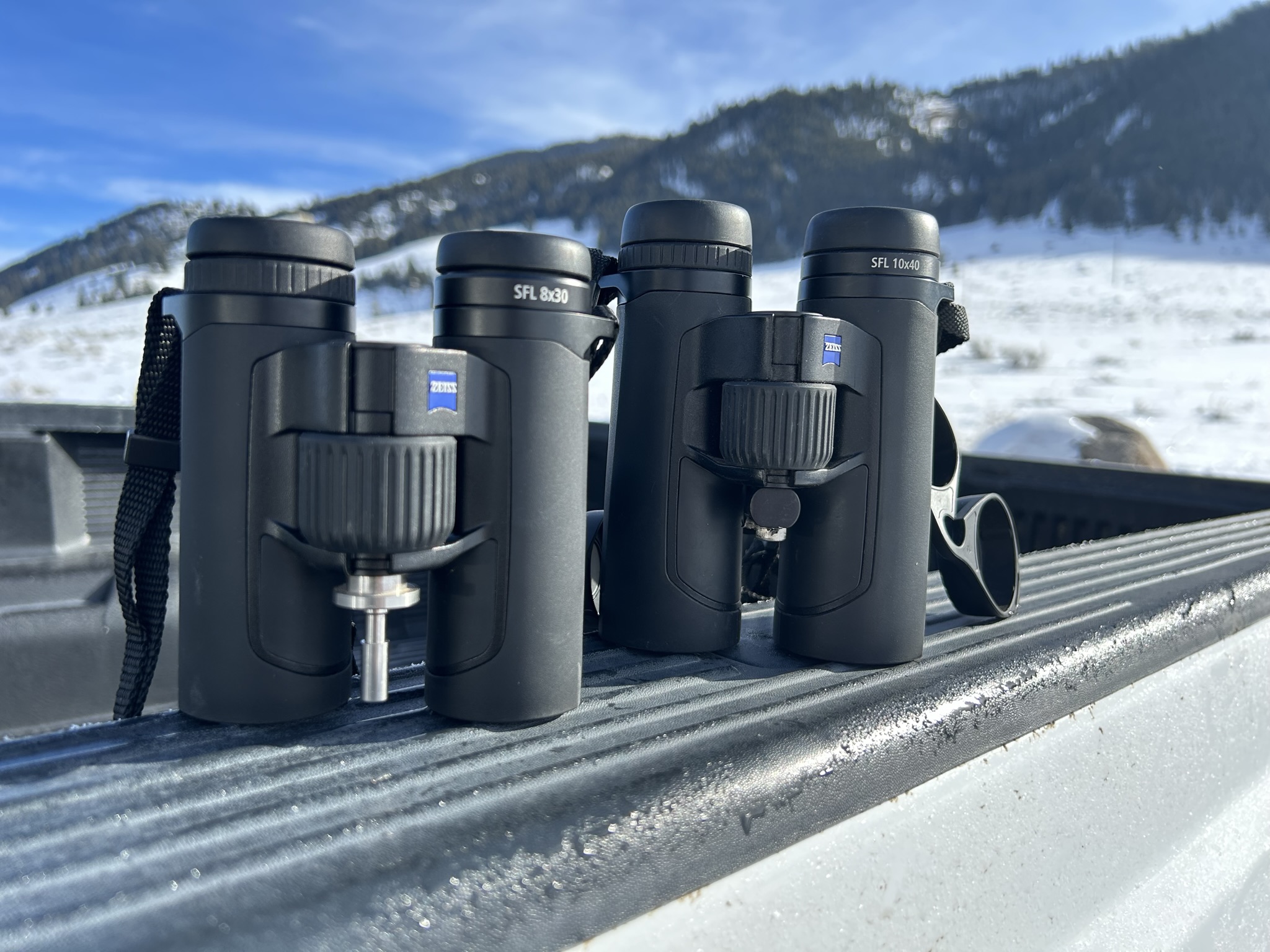
At 4.7” in height (spec’d as length in the manual) and 16.2 ozs (a full inch and 6 ozs less than the 10×40 SFL), they won’t quite go in a shirt pocket, but it’s close!
Resolving Power
After a few trips of side-by-side use, I thought the SFL 30 was resolving better (meaning clearer) than the SFL 40. Although not a completely fair comparison as 10X will resolve better at a given distance than an 8x, I checked them both on 1951 USAF Resolving chart. My perception was correct.
 The 30mm could resolve the same lines within an element as well as the 40mm in daylight at 50 yards. A little common sense says the 10x should have handily beat the 8x, but they didn’t.
The 30mm could resolve the same lines within an element as well as the 40mm in daylight at 50 yards. A little common sense says the 10x should have handily beat the 8x, but they didn’t.
Here are some photos of some elk at about 1.5 miles. A careful eye should be able to see the top photo, shot through the 8×30 SFL, is tad sharper and clearer than the bottom image shot through the 10×40 SFL.
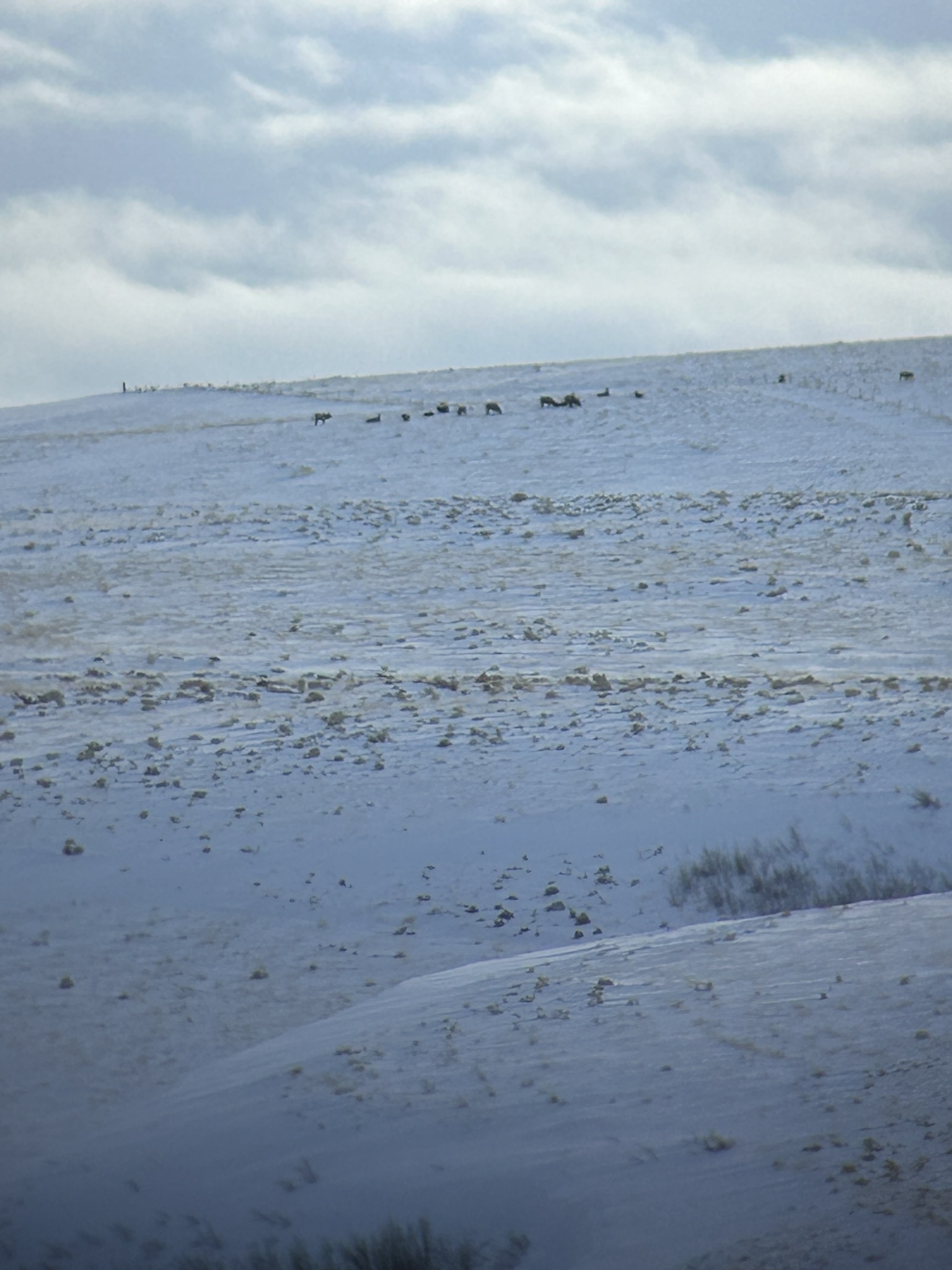
 While close, there is a clearer image in the 30mm. You can also see the small difference (but significant) 2x brings to the dance, but the smaller Field-of-View (FOV) in the 10x is the trade off for a closer view.
While close, there is a clearer image in the 30mm. You can also see the small difference (but significant) 2x brings to the dance, but the smaller Field-of-View (FOV) in the 10x is the trade off for a closer view.
Speaking of FOV
When I wrote earlier that I thought compacts were laughable, I was partially thinking of FOV. My daughter’s old Dora-the-Explorer binocs had better FOV than some compacts of yesteryear! Not true with these SFL 30s. The FOV you see is really good.
As I can’t fairly compare FOV between 8x and 10x, let’s just check the published specs at 1,000 yards:
8×40 SFL = 420’
8×30 SFL = 426’
10×40 SFL = 345’
10×30 SFL = 360
that’s a dead heat at a 1%-4% difference in power-to-power comparisons, but stand back and notice that the little 30mm beats the 40mm in both powers! That’s impresssive.
What about Edge-to-Edge
Edges are equally sharp in both optics, and what I’d expect from Alpha glass. Take this for what it’s worth from a color blind person, but there was a little less color fringe (chromatic aberration) on the 30mm than the 40mm. Neither was close to noticeable, though, as I really had to put the optics in a high contrast enviro (bright sun on snow with dark brush) to even see it.
Tripod Adaptable
Zeiss seems to be getting the message: serious western hunters like to tripod-mount their binoculars—regardless of size or power. I was so happy to see that these little SFL 30s were tripod adaptable, just like my 10×40 SFLs are.
I’ve always preferred putting my binoculars on a tripod when possible. I can’t imagine any western hunter arguing with the fact that steady binoculars find more game, not to mention make grid-glassing more efficient. Thanks Zeiss for not sending me to the aftermarket options.

I ran these little 30s on tripod and window mount Outdoorsmans Pan and Micro-Pan Heads. While it’s weird to see such a little bino on a tripod mount, you’ll forget all about it when you see the view. And to know you can pop them off the tripod and tuck them in your jacket almost unnoticed testifies of the versatility of the SFL 30.
I used Zeiss’ proprietary tripod adapter and stud mount. Here is a video of how it works. *Note, this video shows the 10×40 SFL, but the Zeiss SFL 8x30s adapt exactly the same.
Twilight Performance
Twilight Performance is my term for a real world test of Light Transmission/Twilight Factor/Exit Pupil Size—all spec numbers that are readily available for most binoculars. As the best hunting times are often when the sun is below the horizons, Twilight Performance is very important to me.
A smaller objective lens means a smaller exit pupil—it’s just math. But how much Twilight Performance is lost jumping down 10mm? Again, I hit the resolving chart to determine the difference.
Zeiss vs. Zeiss
I started my test with the Zeiss 10×40 vs the 8×30 at official sunset of 5:15 PM on the same Resolving Power chart, but moved up to 25 yards. Unlike the daylight performance mentioned above, as twilight set in, the Zeiss 40s pulled ahead of the Zeiss 30s.
We’d expect that because the 40s boast a 4mm exit pupil while the 30mm only hits a 3.75mm hole diameter (Twilight Factor of 20 vs. 15.5 respectively). But this isn’t a completely fair test as the 8x has 25% less power to work with than 10x, and that makes a difference in fading light.
Zeiss vs. Swarovski
I had my Swarovski EL Range 8x42s (2014 model year) ready to give as fair of comparison as possible. I would have used my EL Range TAs, (model year 2021) but they’re at Outdoorsmans for a stud install. They resolve better than the 2014 model by a small margin, so keep that in mind.
To my surprise, at legal sunset, the 30mm Zeiss was equaling the 42mm Swarovski! But as it got darker, I was even more surprised as the little 30s hung with the 42s until 5:45, a full 30 minutes after legal. That was when I tapped out the SFL 8×30. The Swarovski EL Range 8x42s only made it one more minute before I could no longer separate lines within the chart. One minute!!!
Again, that’s eight model years ago on the Swarovski, but I could hardly believe how far we’ve come in those eight years. I would never guessed we’d see a 30mm objective competing with a 42mm. Impressive.
Final Thoughts
We live in the golden age of glass. While the performance upgrades might still come in at diminishing returns, they still add up.
These Zeiss SFL 8x30s pack a powerful punch for their class. I think any hunter who wants to go as light as possible on binoculars should take a look at these little 30mm SFLs before buying a bigger binocular.
Yes, you’ll get more performance in bigger heavier and more expensive binoculars, but at 16 ozs—and still sporting glass lenses with full-on magnesium frames—true ounce counters are going to have a hard time ignoring the Zeiss SFL 8×30.

Rokslide members can discuss this review here
I just released my second book: Hunting Big Mule Deer: The Stories on Amazon here
This is the follow up to How to Take the Best Buck of Your Life.





